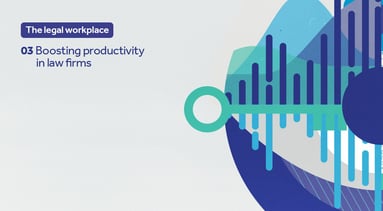"The pandemic shifted work from the traditional ‘9-to-5’ office model to a flexible, task-oriented approach. Organisations now need to rethink the role of physical offices as one of many environments where employees can be productive and engaged."
Julie Lecoq
Workplace Change & Transformation Lead, Unispace
The return to the office has evolved from full-time in person work to a hybrid model across the globe. Initially driven by the COVID-19 pandemic, hybrid working became widespread and virtually the norm overnight for many organisations. As restrictions eased, many companies embraced flexible arrangements, balancing productivity and employee preferences with business needs. So how has this shift impacted the physical workplace?

Work as an activity, not a place
The pandemic accelerated a shift from the traditional ‘9-to-5’ office model to a more flexible, task-oriented approach, with remote working becoming the norm for many employees worldwide. It also demonstrated that productivity is no longer bound to a specific location.
Companies such as Dropbox have adopted a 'virtual-first' strategy, allowing their employees to work from anywhere, with office spaces serving primarily as collaboration hubs. This shift highlights that work is defined by what we do, not where we do it.
This evolving landscape of work requires organisations to rethink the role of physical offices, not only as a symbol of their brand and corporate culture, but also as just one of many environments where employees can be productive and engaged.
‘Return to office’ as a choice: inclusion for all
For many organisations, the office is no longer simply a place where employees are ‘required to be’, but rather a hub for collaboration - whether with colleagues, clients, or partners - and a space for creative work and in-person meetings when necessary.
However, it is important to recognise that for some individuals, returning to the office is not a choice but a necessity, whether due to the need to separate work from home life, the need for human connections, or the lack of a suitable remote work set-up. Therefore, it is essential that the physical workplace offers a variety of environments to meet diverse needs and preferences, including spaces designed for focused, low-stimulus work, learning, and virtual meetings.
Companies like SAP, EY, and Microsoft, who are at the forefront of neuro-inclusivity, have introduced flexible work models that accommodate varying needs, helping their employees to thrive and flourish in environments suited to their sensory and cognitive preferences.
Providing autonomy and choice over workspaces - whether physical or digital - reflects a commitment to diversity, empowering individuals - particularly those who may find traditional office settings overwhelming - to work in ways that suit them best.
"Work is defined by what we do, not where we do it."

Work-life integration as the new normal
In recent years, the boundaries between work and personal life have blurred, shifting from ‘balance’ to ‘integration’. Wellbeing and mental health have become priorities, with personal and professional lives blending more seamlessly.
Companies like Salesforce and Spotify are embracing this shift, implementing mental health initiatives and flexible work arrangements such as a ‘Work from Anywhere’ model, to support employees in integrating work more harmoniously into their lives.
This transition reflects a growing recognition of the strong connection between mental health, wellbeing, and the way work is structured.
The discussion around 'returning to the office' extends beyond the physical workspace. It’s about creating environments that genuinely support your people, going deeper than aesthetics alone. The office is simply a tool. It’s your organisational culture that will encourage employees to join your organisation or return to the office, not just the space itself. No matter how much is invested in your workplace or your technology, if the culture does not meet and adapt to the needs of your people, performance, engagement and motivation are likely to be impacted.
Creating effective workplace strategies in a post-pandemic world is a complex task. As organisations continue to navigate the evolving world of work, it’s vital to keep people at the centre of the conversation and get them involved. A well-considered strategy, combined with effective change management, is key to ensuring a smooth transition that aligns with the shifting needs and expectations of your workforce.


